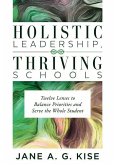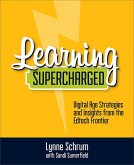Among the many models of school reform that have emerged in the late 20th and early 21st centuries, one has endured for more than 50 years: the School Development Program (SDP). Established in 1968 by renowned child psychiatrist James P. Comer and the Yale Child Study Center, the SDP is grounded in the belief that successful schooling--particularly for children from disadvantaged backgrounds--must focus on the whole child. With that in mind, the SDP encompasses both academics and social-emotional development, and it is founded on positive and productive relationships among students, teachers, school leaders, and parents. With the Whole Child in Mind describes the SDP's six developmental pathways (cognitive, social, psychological, physical, linguistic, and ethical) and explains how the program's nine key components (in the form of mechanisms, operations, and guiding principles) create a comprehensive approach to educating children for successful outcomes. Firsthand recollections by Comer, school leaders and teachers, and SDP staff members provide an inside look at the challenges and successes that eventually transformed severely underperforming schools into models of excellence. Linda Darling-Hammond, one of the country's foremost experts on K-12 education, and her colleagues argue persuasively for the continuing relevance of the SDP. Far too many schools still operate in a high-pressure environment that emphasizes testing and standardized curricula while ignoring the fundamental importance of personal connections that make a profound difference for students. Fifty years on, the SDP is still just as powerful as ever.








